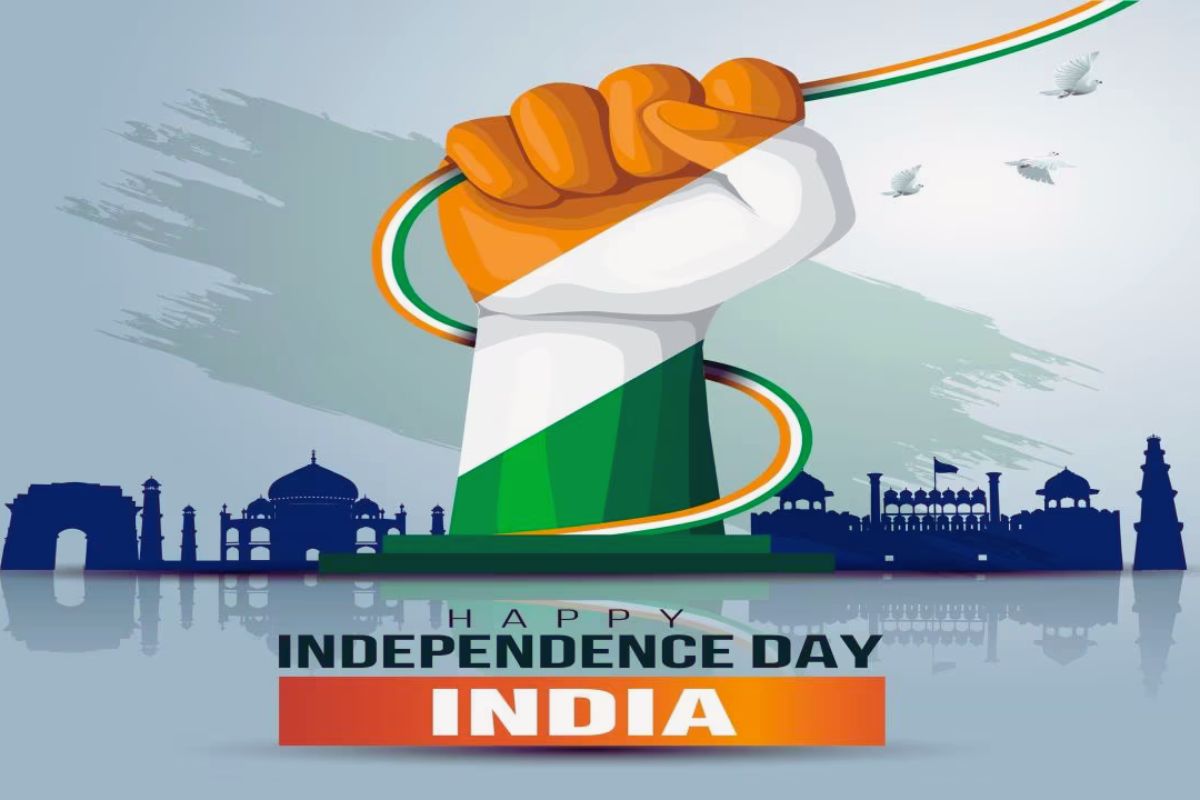Independence Day 2024: Celebrating a New Era of Freedom in India
India is set to celebrate its 78th Independence Day on August 15, 2024, which marks another significant milestone in the nation’s journey toward freedom and self-determination. This year’s celebration comes with a renewed sense of national pride, as the country reflects on its progress since gaining independence from British rule in 1947.
Among the highlights of this year’s festivities is the third edition of the Har Ghar Tiranga campaign, which encourages citizens to display the Indian flag at their homes from August 9 to August 15, 2024. Prime Minister Narendra Modi has called on the people to participate actively, even suggesting that they update their profile pictures on social media with the tricolor as a symbol of unity and patriotism.
Also Read This Article:
- Pakistanis Furious, Disappointed In Dubai After Burj Khalifa Doesn’t Light Up In Flag’s Colors On Independence Day; Video Goes Viral
- Is Bickram Ghosh’s “Yeh Desh!” the Ultimate Musical Tribute to India’s Independence?
Reflecting on the Sacrifices of Our Freedom Fighters
As we celebrate Independence Day, it’s crucial to remember the immense sacrifices made by our forefathers to secure the freedom we enjoy today. The struggle for independence was a long and arduous journey, marked by the relentless efforts of countless freedom fighters who faced imprisonment, torture, and even death in their quest for liberty. Figures like Mahatma Gandhi, Bhagat Singh, Sardar Vallabhbhai Patel, and many others played pivotal roles in challenging British rule and inspiring millions of Indians to fight for their rights.
The price of freedom was steep, and it’s our duty as citizens to honor their legacy by upholding the values they fought for—justice, equality, and the right to self-governance. Independence Day is not just a celebration of our freedom; it’s a day to reflect on the responsibilities that come with it and to ensure that the sacrifices of our predecessors were not in vain.

The Har Ghar Tiranga Campaign: A Tradition of Unity
The Har Ghar Tiranga campaign, first introduced in 2022 as part of the Azadi ka Amrit Mahotsav initiative, has quickly become a cherished tradition in India. This campaign encourages citizens to bring the national flag into their homes, fostering a personal connection with the Tiranga and promoting national unity. In its inaugural year, the campaign saw over 5 million selfies with the flag uploaded to the official website, a testament to the widespread enthusiasm and patriotism it inspired.
The idea behind the campaign is to move beyond the formal and official association with the flag, allowing individuals to engage with it in a more personal and meaningful way. By displaying the Tiranga at home, citizens are expressing their love for the country and participating in a collective effort to strengthen the nation’s unity and spirit.
The Evolution of the Indian National Flag
The Indian national flag, known as the Tiranga, is a symbol of the country’s identity and pride. The flag features three horizontal bands of color—saffron at the top, white in the middle, and green at the bottom—with a 24-spoke navy blue Ashoka Chakra in the center. Each element of the flag carries deep significance: saffron represents courage and sacrifice, white symbolizes peace and truth, green stands for faith and chivalry, and the Ashoka Chakra reflects the eternal wheel of law.
The design of the Tiranga was inspired by the flag of the Indian National Congress, which was in turn influenced by the Swaraj flag proposed by Mahatma Gandhi. The final design, with the Ashoka Chakra replacing the original spinning wheel (charkha), was adopted by the Constituent Assembly on July 22, 1947, just a few weeks before India gained independence.
Initially, the national flag was made from khadi, a hand-spun fabric popularized by Mahatma Gandhi as a symbol of self-reliance and resistance to British goods. However, over the years, the materials used to make the flag have evolved to include cotton, silk, polyester, and wool, ensuring that the flag is accessible to all and suitable for various conditions.
The Bureau of Indian Standards oversees the manufacturing process to ensure that the national flag meets strict quality standards. Only a few units in India are authorized to produce the national flag, under the supervision of the Khadi Development and Village Industries Commission.
Independence Day 2024 Theme: Viksit Bharat: Towards a Developed Nation
The theme for India’s 78th Independence Day is Viksit Bharat (Developed India), reflecting the government’s ambitious vision to transform India into a fully developed nation by 2047, the centenary of our independence. This theme underscores a commitment to comprehensive progress across various sectors, including technology, education, infrastructure, healthcare, and more.
Viksit Bharat is not just a vision for the future; it’s a call to action for the present. It represents the government’s dedication to ensuring that every citizen benefits from the country’s economic growth and social advancement. The theme also emphasizes the importance of innovation, sustainability, and inclusivity as key pillars in building a prosperous and equitable society.
Conclusion: Celebrating Unity, Progress, and a Bright Future
As India prepares to celebrate its 78th Independence Day, the nation stands united in its pursuit of progress and prosperity. The Viksit Bharat theme embodies the collective ambition to build a stronger, more inclusive India, honoring our rich history while embracing future opportunities. This Independence Day, let’s come together to celebrate our freedom, pay tribute to our past, and look forward to a bright and prosperous tomorrow.
Join the Digi Hind Community – Follow Us on Social Media for Real-Time Updates!
Stay connected and informed by following us on social media. Our channels provide real-time updates on the latest news, trends, and insights in the digital world. Join our growing community on platforms like Instagram, YouTube, and Facebook to engage with us.